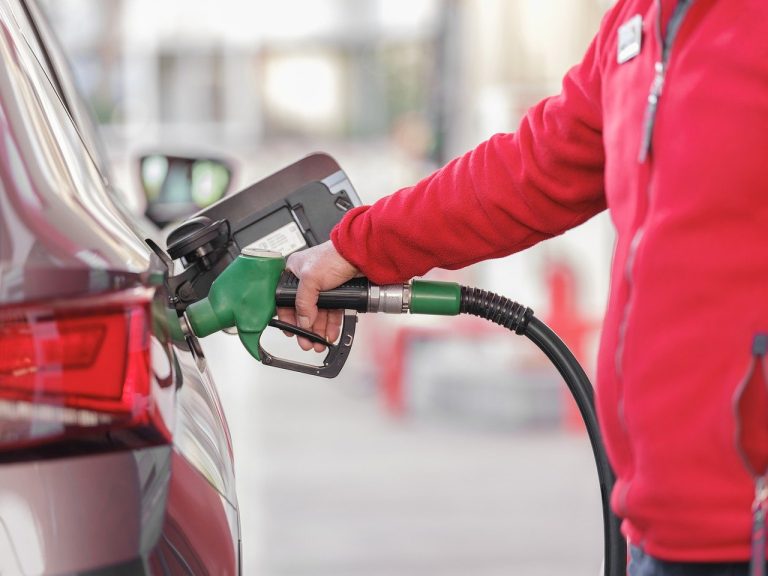FORT PIERRE, S.D. — The economic benefits of a proposed carbon capture pipeline came under scrutiny Wednesday during the second day of a permit hearing before state regulators at the Casey Tibbs Rodeo Center.
The project would create about 430 jobs in South Dakota during the construction phase, 20 jobs during operation, and $1.3 million in sales and gross receipts taxes during initial construction. That’s according to Jonathon Muller, a private economics and policy consultant. He testified about the economic benefits of the project before the state’s three elected public utilities commissioners.
Muller testified that landowners would receive about $10,200 per impacted acre, factoring in easement payments for the right of way and crop damage payments.
“Unquestionably, it will increase personal income, employment, and output in South Dakota,” Muller said.
Jared McEntaffer is CEO of Dakota Institute, a nonprofit economic research organization that conducted an economic impact study on the pipeline. His study suggests the ethanol industry could grow, creating demand for up to 15% more corn if the state approves both of the carbon capture pipeline projects proposed to cross South Dakota. The other project is scheduled for a permit hearing in September.
“Based on our findings,” McEntaffer said, “yeah, it would have positive economic impacts.”
Brian Brinkman is the manager of the Valero ethanol plant in Aurora, which hopes to connect to the pipeline. He testified that not going forward with the project would leave the plant behind competitors.
“Low carbon fuels have better value,” Brinkman said. “If we don’t do this, other plants will.”
The proposed 1,300-mile, approximately $3 billion Heartland Greenway pipeline is proposed by Navigator CO2. The pipeline would link 21 ethanol plants (including three in South Dakota) and several fertilizer plants across five states. The project would include 111.9 miles of pipeline in eastern South Dakota, crossing five counties. The estimated cost of the South Dakota portion of the project is $142 million. An additional $37 million would be spent on capture facilities.
The pipeline would capture carbon dioxide emitted by the plants and transport it in liquefied form for underground storage in Illinois, or for commercial and industrial uses. The project would be eligible for up to $1.3 billion in annual federal tax credits, which are intended to help fight climate change by incentivizing the removal of heat-trapping carbon dioxide from the atmosphere.

Pushing back on economic projections
Commissioners and attorneys representing landowners critically examined the validity of the economic projections. Brian Jorde, representing landowners, said the studies did not consider alternative carbon sequestration methods, like buying only sustainably grown corn for the production of ethanol.
“I thought about it,” said Muller. “It’s not in the report.”
Jorde criticized the Iowa-centric focus of Muller’s study, its reliance on data provided by Navigator or other sources, and Muller’s contract with the pipeline company to conduct the study.
“Yeah, I produce studies and people pay for them and use them however they like,” Muller said.
Jorde also attacked Muller’s study for not taking into account the impact on future land values from the loss of business and housing developments, or the money spent by opponents to pay for lawyers or to attend hearings.

In an attempt to make his point, Jorde asked Muller if the money paid to a widow upon the death of her spouse is a “net economic gain.”
“It may be an economic benefit. I’d have to know what her husband was like,” Muller said, drawing some laughs.
Craig Schaunaman farms near Aberdeen and attended the hearing in opposition to the project, even though it’s the other pipeline — proposed by Summit Carbon Solutions — that would cross his land.
Schaunaman said he has new development popping up all around his property. He’s concerned about how a hazardous pipeline would impact the value of the property – potentially steering away would-be developers.
“Real estate is all about location, location, location,” Schaunaman told South Dakota Searchlight. “So a study that doesn’t take into play future development and expansions, it’s just like, come on. On our farm, we have a responsibility to ensure the best opportunities for future generations.”
Commissioner Gary Hanson said he’s not sold that the markets coveted by the ethanol industry, like California, are interested in the product. He cited the state’s mandate to replace gas-powered vehicle sales with electric vehicles and said he’s skeptical of some of the findings in the economic reports.
Kristen Edwards, a commission staff member, asked if Muller factored in the tax implications of the right-of-way payments to landowners.
“I did not,” Muller replied.
Near the end of Muller’s testimony, Commissioner Kristie Fiegen cited questions about the data and asked him, “What can commissioners rely on?” Muller replied that regardless of potential flaws, the point of the study is that it’s impossible to spend billions “and not have tremendous economic outcomes.”
When pressed by commissioners and Jorde about the accuracy of the Dakota Institute report, McEntaffer replied that no study factors in everything.
“We had to stop somewhere, so to speak,” McEntaffer said.
Jorde then asked McEntaffer where the corn would come from to feed the potential 15% higher demand for corn his analysis cites.
“We’re not turning 15% more land into corn, are we?” Jorde asked.
“I don’t think so,” McEntaffer replied. He said the new corn would likely come from increased yields with genetics. He said the state produced 660 million bushels of corn in 2022, and the ethanol industry would need 590 million bushels (about 90% of all the corn currently produced in South Dakota) to meet the demand created by both the pipeline projects seeking permits in the state.
“The amount of corn produced in the state is already sufficient,” McEntaffer said.
Safety discussed
Mark Hereth, the managing director of a pipeline consulting firm called Blacksmith Group, testified that pipelines are a safe way to transport liquified carbon dioxide, and the plan proposed by the company would meet federal regulatory requirements.
Opponents have concerns about carbon dioxide plumes from potential pipeline leaks. In 2020, a leak in a carbon pipeline in Mississippi caused the evacuation of about 200 people and sent 45 to the hospital.
Hereth acknowledged that “accidents happen,” but said that’s why any project should include planning for those “rare incidents.”
Jorde pushed back, asking Hereth about the Pipeline Safety Trust, a nonprofit promoting pipeline safety, which has declared carbon capture pipelines too unregulated and generally unsafe.
“I disagree with that,” Hereth said.
Navigator’s hearing continues
The Heartland Greenway pipeline is one of two proposed carbon capture pipelines that would pass through the state. But unlike the other project proposed by Summit Carbon Solutions, Navigator CO2 has not yet leveraged eminent domain – a court process to gain access to land when an agreement can’t be reached with the landowner.
When pressed by Jorde during the first day of the hearing, Navigator CO2 would not rule out eminent domain.
“We strive to not go down that path,” said Jeff Allen, founding member and chief financial officer of the company.
Navigator has thus far struck access agreements — called “easements” — with about 30% of the owners of land the pipeline would cross.
Wednesday’s proceeding was the second of nine days of scheduled testimony and deliberation. Thursday is scheduled to continue with more testimony and cross-examination of Navigator’s witnesses. Testimony from the opponents is scheduled for next week.
Hearings for the other pipeline, proposed by Summit Carbon Solutions, are scheduled to begin Sept. 11.













